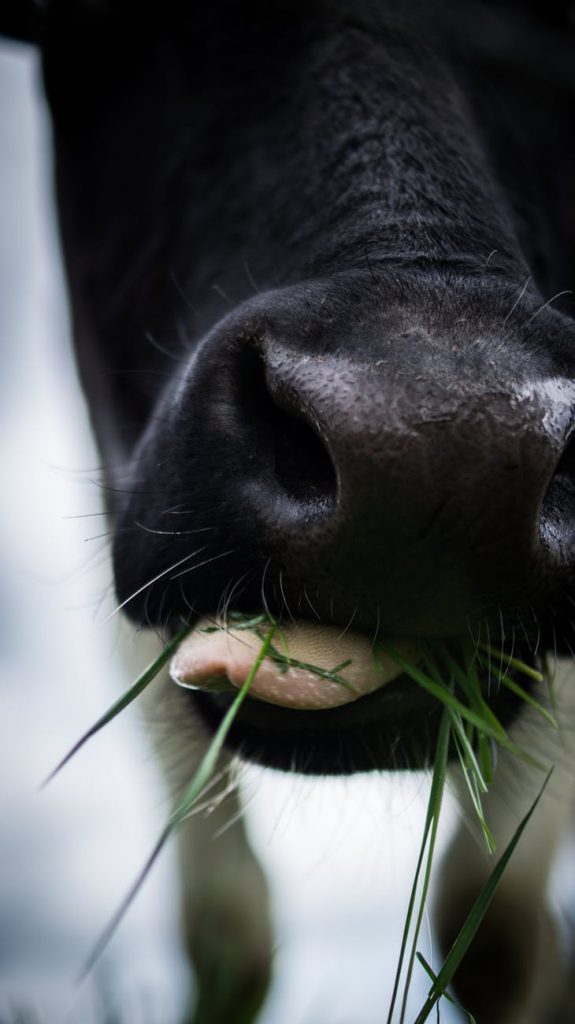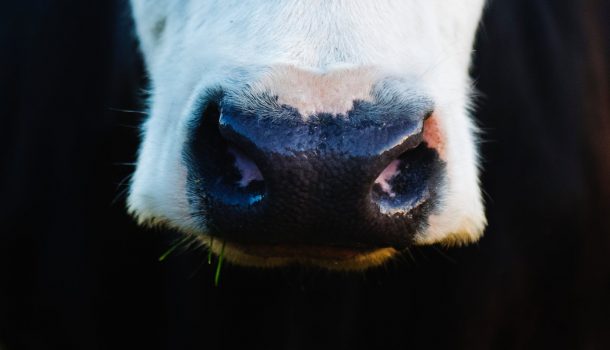A recent research project connects farmers and health.
Central Wisconsin dairy farmers shared many of the same microscopic organisms as their cows that may lead to greater protection against illnesses like allergic rhinitis, asthma, eczema and diarrheal diseases, according to a study led by Marshfield Clinic Research Institute.
Marshfield Clinic Health System researchers collaborated with the Washington University School of Medicine to publish one of the largest studies of its kind in the April issue of Nature Microbiology on the health of dairy workers from occupational exposure to cow and manure-related microbiome. Microbiome is the collection of all microbes, such as bacteria, fungi, viruses, and their genes that naturally live in human body or an environment.



The published study, “Longitudinal dynamics of farmer and livestock nasal and fecal microbiome and resistomes,” shows that farming is associated with microbiomes containing livestock-associated microbes. This is most apparent in the nasal bacterial community, with farmers harboring a richer and more diverse nasal community than non-farmers. Similarly, in the gut microbial communities, researchers identified more shared microbial lineages between cows and farmers from the same farms. Additionally, they found that shared microbes are associated with antibiotic resistance genes.
“Overall, our study demonstrates the interconnectedness of human and animal microbiomes,” said Sanjay Shukla, Ph.D., director of the Center for Precision Medicine Research at Marshfield Clinic Research Institute. “It is increasing evident that billions of microbes that inhabit the human gut, which includes the stomach, intestines and colon, have tremendous opportunity to influence the health of a person.”
A worldwide impact examined in central Wisconsin
Globally, half a billion people are employed in animal agriculture and are directly exposed to associated microorganisms. The extent to which such exposures affect resident human microbiomes is unclear.
The goal of the study was to investigate the effect of dairy microbiome environment on the gastrointestinal and flu-like related health issues of dairy farmers. Researchers conducted a longitudinal profiling of the nasal and fecal microbiomes of 66 dairy farmers and 166 dairy cows from 37 central Wisconsin dairy farms, ranging in size from 24 to 1,700 milking cows over a year-long period. The farmers’ microbiomes were compared to matched healthy human subject controls from the same zip codes whom researchers collected their stool and nasal swab samples every three months over a three-year period.
This in-depth study showed that the farmer nasal microbiome, although distinct, was very similar to the nasal microbiome of cows but very different from the non-farmer control subjects. This similarity was observed despite the cow nasal microbiome was richer in diversity. Also, there was a shared microbiome architecture between the cows and the farmers even from different dairy farms suggesting selection of a unique microbiota in dairy environments. The sharing of the microbes in nasal passages was due to the occupational exposure of the dairy environment. Not surprisingly, there was a higher sharing of bacterial lineages within in a farm between the dairy farmers and cows than a different farm suggesting the effect of cohabitation and the livestock driving the sharing.
Dairy farmers nasal microbiome samples were enriched with bacteria belonging to families Lactobacillaceae, Aerococcaceae and Enterococcaceae which are known to provide a barrier to sinus infections.
An earlier study by the same group published in PloS One journal (PMID: 28850578) had shown that dairy farmers had lower burden of bacteria belonging to staphylococci often associated with serious hospital-associated infections.
The effect on the gut microbiome was different. The study showed selection of a host-driven gut microbiome in cows versus humans. A cow’s gut microbiome was much more diverse than the dairy farmers and non-farmers reflecting more of the host specific effect. A related study by the same group published in the Journal of Agromedicine (PMID: 37128886) on the same cohort of dairy farmers and non-dairy farmers had shown that former group reported fewer gastrointestinal related symptoms over the study period. Specifically, the gut of the farmers had relatively more Coprococcus eutactus and Roseburia faecis, the lack of which is associated diarrheal diseases. It is likely that effect of microbiome on the farmer’s gut was at the functional level rather than at a higher taxonomic composition level.
The study also showed the presence of a high number of antibiotic resistant genes in both cow’s and farmer’s and non-farmer’s gut, but the data suggests that dairy farming occupation had little effect on the restructuring of the farmer’s gut resistomes. A resistome is a collection of microbial genes that resists antibiotics, posing challenges in treating infections. Understanding the resistome is important in the battle against antibiotic resistance.
The study, naturally, led the researchers to pose additional questions that must be answered, including how occupational exposures interact with other environmental factors to shape farmer microbiomes.
“Future studies are warranted to determine whether and how diet and antibiotics facilitate the acquisition, maintenance or amplification of farm- and livestock-associated microbes, as well as their antibiotic resistance genes,” Shukla said. “Ultimately, such a comprehensive understanding of how human-animal interfaces shape the resident human microbiomes could give rise to novel strategies for mitigating the risks of animal agriculture on farmers and broader public health.”
The study was led by the Dr. Sanjay Shukla, director of the Center for Precision Medicine Research at Marshfield Clinic Research Institute and Dr. Gautam Dantas, Conan professor of Laboratory and Genomic Medicine at the Washington University of School of Medicine in St. Louis, Missouri. Co-investigators of the study included Dr. Casper Bendixsen, director of the National Farm Medicine Center and Epidemiologist Dr. Jeffrey Vanwormer, director of the Center of Clinical Epidemiology and Population Health. The Centers for Disease Control and Prevention and National Institute of Occupational Safety and Health funded the study.
“This project is one of the most unique collaborations in which I’ve participated,” Bendixsen said. “Starting from handshakes with farmers to a major publication is very rewarding. Importantly, as U.S. farms consolidate, grow fewer, and grow less diverse, the time to explore these complex environments for health problems and solutions is now.”
All investigators express a sense of gratitude to all the research coordinators, programmers, laboratory personnel and most importantly forward-thinking dairy farmers and dairy farm owners of central Wisconsin for participating in this important research and promoting this study including during the difficult times of COVID pandemic. All questions about the study can be sent to Sanjay Shukla.
“We know that people who work on farms have some unique health characteristics, both good and bad, but we do not fully understand why,” VanWormer said. “This study helps us begin to understand the biological pathways by which the farm environment impacts workers’ health.”


